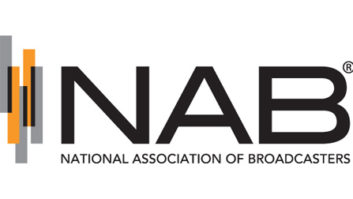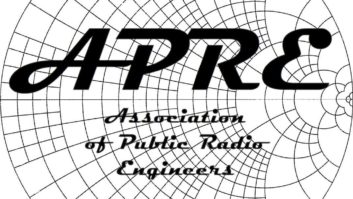RW offers this space as a service to the SBE.
Reduced personnel, more work, more responsibility and fewer resources – sound familiar?
Radio and TV stations all across America are trying to do more with substantially fewer resources, in both staff and budget. And, in the short term, this situation is not expected to improve.
We at the Society of Broadcast Engineers are aware of this dilemma and, where possible, we want to help. That is why we are here. We’re not just a membership organization; we have programs specifically targeted to help you in your career path and daily work, and these were never more important than in times like these.
A benchmark
The Certification Program, for example, makes it easier for engineering management to find the right people. Certification helps confirm that candidates are qualified in the areas in which you are seeking help. From radio to television, transmitters to computers, SBE Certification serves as a benchmark for technical achievement.
But benchmarking achievement is not the only purpose of Certification. We also encourage and provide technical education through conventions and chapter meetings, seminars and tutorials. We have developed a new level of Certification that specifically addresses the issues of network technology in broadcasting, an increasingly critical area.
We are constantly upgrading our sample tests and real examinations to ensure that we are stressing the latest in broadcast technology, so you can be certain that your Certification is achievable and meaningful.
But the work of Certification is only part of what SBE offers. Also important to you in your day-to-day operations is the efficient use of the broadcast spectrum.
Unless you have been hiding under a rock, you have heard that the FCC has discovered a new method of making money for the government. This method is called “auctions”! In today’s environment, if there is not an attached license or a powerful enough lobby to protect it, spectrum is being sliced off in large chunks and auctioned to the highest bidder. Broadcasters have a lot of spectrum, and Congress is eyeballing it with an eye toward fattening the government treasury.
The losses: TV Channels 60-69 – gone. Channels 52-59 – gone. And watch out! The 2 GHz ENG channels – gone.
SBE has been attempting to protect those assets actively wherever possible. Dane Ericksen, CPBE, and his FCC Liaison Committee have been burning the midnight oil and wearing out a lot of pencils trying to help you keep spectrum,or at least slow down the loss of usable channels.
Wireless woes
With the loss of spectrum, we are working with several groups in an attempt to maintain, or possibly even improve, the status quo.
The loss of TV Channels 62-69 not only means that those stations have to be displaced, but where will all those wireless mics in that spectrum be moved?
SBE member Karl Voss of Phoenix (yeah, the same guy that somehow waves a magic wand every Super Bowl and makes a lot of people very happy by finding a way to shoehorn in a few thousand RF users into a quarter-square-mile football station – that Karl Voss) came up with a good idea: Let’s put wireless mics into the proposed guard bands of these new users of Channels 62-69!
Great idea. Dane Ericksen went to work on this, and SBE will submit it as a proposed rulemaking for the FCC.
Then we have the loss of Channels 1 and 2 in the 2 GHz ENG spectrum. A few years back, this spectrum was sought by satellite services – and the FCC determined that it was in the public interest for broadcasters to give it up.
Who knows? This could have happened after some politician had a problem with a sound bite one night and decided to get even. Well, it worked. The FCC felt that we as broadcasters could implement this by reducing the allowable spectrum by 17 MHz (Phase I) while rechanneling the ENG frequencies to 14.5 MHz bandwidth – and you still end up with seven channels as always!
Easy enough, thought the FCC. After all, you reduced your 36 MHz HDTV requirement to 6 MHz, so you should be able to get ENG down a bit as well. Wrong!
I guess we might need to add the word “live” to breaking ENG reports, because trying to keep what we have while reducing the bandwidth is just a bit difficult.
Just when we started working on this, a reduction of one channel, we learn – hold on – the FCC announces that broadcasters should also give up Channel 2 a little later down the road.
What?! We can’t do it with 14.5 MHz, and now you want it reduced to 12? OK, what next? Sell tourist packages to the international space station? Why not! Well, let’s just call this Phase II.
OK, broadcasters, develop a new ENG system with seven channels, each 14.5 MHz wide, use this for a short time, and then do it all again and reduce it to 12 MHz.
Any equipment manufacturers want to gear up your factory to convert analog radios for a short term, and then repeat the same situation again? And at what cost? Not only in money, but also in programming disruptions to your 6 o’clock news. I can’t wait to see the look on the faces of news directors. You want to do what? When?Yeah, right!
Team effort
SBE is working with the networks and several station groups, to determine a solution.
Andy Bater of the Tribune Group chairs the ad hoc 2 GHz ENG Transition Committee and is working on this with valuable assistance from Craig Strom of WLS(TV) and several others from ABC, CBS, Fox, NBC, Belo and Cosmos.
Representing SBE is Dane Ericksen, SBE General Counsel Chris Imlay, SBE Executive Director John Poray, myself and, in his first major assignment as SBE’s newest staff member, SBE Frequency Coordination Director Galen Hassinger, CBT.
As we move forward, we will be advising you of our progress. Should you wish to be more closely involved, contact Hassinger at (941) 267-1742 or [email protected].
He comes to us after a successful history in broadcast engineering and sales. Most recently, he was director of engineering for WINK-AM-FM-TV in Fort Myers, Fla. Prior to that, he held engineering positions in South Carolina, Orlando, Fla. and Nebraska, as well as having served as a sales representative for Harris Broadcast.
Hassinger hails from the state of Nebraska. With his expertise, in addition to the efforts of our Frequency Coordination Committee and the help of all the SBE staff, we are showing how SBE intends to take a more aggressive posture for our membership in this important area.











